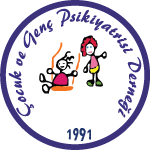ABSTRACT
Objectives:
This research was planned to determine the anxiety and hope levels of adolescents for the future, during the quarantine days which applied in Coronavirus disease-2019 (COVID-19) outbreak and after the quarantine “new normal” period.
Materials and Methods:
Our research includes the data of an online questionnaire prepared by Marmara University Faculty of Medicine Department of Child and Adolescent Psychiatry. The questionnaire was applied 2 times during the quarantine period (8-15 April 2020) and after the quarantine end (5-12 August 2020). The questionnaire includes questions about sociodemographic data, the level of knowledge about COVID-19, the level of anxiety and hope for the epidemic and subsequent periods. Participants were also asked to fill in the Hope Scale for Children and the Dispositional Hope Scale.
Results:
One hundred thirty six participants between the ages of 11-18 filled the questionnaire, which was applied for the first time on April 8-15, and the average age of the participants was found to be 15.83±1.86 years. One hundred twenty two participants filled the questionnaire applied between 5-12 August and the average age of the group was 14.73±2.25 years. It was observed that the frequency of following the news and developments about the coronavirus decreased in the survey in August. In both April and August surveys, it was observed that uncertain process and uncontrolled eating and gaining caused more anxiety in girls than boys (p <0.05). In both surveys, there was no significant difference in terms of hope levels by gender.
Conclusion:
Although the data of the online questionnaires discussed in our study do not reflect a clinical situation, these data will contribute information for medical literature about anxiety and hope levels in adolescents during the pandemic process. It is thought that there is a need for new studies to be conducted with children and adolescents whom mentally vulnerable group.
Keywords:
COVID-19, anxiety, hope, child mental health, pandemic, quarantine, epidemic adolescent
References
1Jiao WY, Wang LN, Liu J, Fang SF, Jiao FY, Pettoello-Mantovani M, Somekh E. Behavioral and emotional disorders in children during the COVID-19 epidemic. J Pediatr. 2020;221:261-266.
2Wang G, Zhang Y, Zhao J, Zhang J, Jiang F. Mitigate the effects of home confinement on children during the COVID-19 outbreak. Lancet. 2020;395:945-947.
3Ehrich J, Namazova-Baranova L, Pettoello-Mantovani M. Introduction to “diversity of child health care in europe: a study of the european paediatric association/union of national european paediatric societies and associations”. J Pediatr. 2016;177:1-10.
4Klein TP, Devoe ER, Miranda-Julian C, Linas K. Young children’s responses to September 11th: the New York City experience. Infant Ment Health J. 2009;30:1-22.
5Hoven CW, Duarte CS, Lucas CP, Wu P, Mandell DJ, Goodwin RD, Cohen M, Balaban V, Woodruff BA, Bin F, Musa GJ, Mei L, Cantor PA, Aber JL, Cohen P, Susser E. Psychopathology among New York city public school children 6 months after September 11. Arch Gen Psychiatr. 2005;62:545-552.
6Fiese BH, Spagnola M. The interior life of the family: looking from the inside out and the outside in. In: Masten AS, ed. Multilevel Dynamics in Developmental Psychopathology: Pathways to the Future. New York, NY: Taylor & Francis Group/Lawrence Erlbaum Associates; 2007:119-150.
7Luthar SS. Resilience in development: a synthesis of research across five decades. In: Cicchetti D, Cohen DJ, eds. Developmental Psychopathology: Risk, Disorder, and Adaptation, 2nd ed. Hoboken, NJ: John Wiley & Sons Inc; 2006:739-795.
8Masten AS, Obradovic J. Disaster preparation and recovery: lessons from research on resilience in human development. Ecology Soc. 2008;13:1-16.
9Brazendale K, Beets MW, Weaver RG, Pate RR, Turner-McGrievy GM, Kaczynski AT, Chandler JL, Bohnert A, von Hippel PT. Understanding differences between summer vs. school obesogenic behaviors of children: the structured days hypothesis. Int J Behav Nutr Phys Act. 2017;14:100.
10Brooks SK, Webster RK, Smith LE, Woodland L, Wessely S, Greenberg N, Rubin GJ. The psychological impact of quarantine and how to reduce it: rapid review of the evidence. Lancet. 2020;395;912-920.
11Sani G, Janiri D, Di Nicola M, Janiri L, Ferretti S, Chieffo D. Mental health during and after the COVID-19 emergency in Italy. Psychiatry Clin Neurosci. 2020;74:372.
12Sprang G, Silman M. Posttraumatic stress disorder in parents and youth after health-related disasters. Disaster Med Public Health Prep. 2013;7:105-110.
13Green LS, Oades LO, Grant AM. Cognitive-behavioral, solution-focused life coaching: Enhancing goal striving, well-being, and hope. J Positive Psychol. 2006;1:142-149.
14Atik G, Kemer G. Çocuklarda Umut Ölçeği’nin psikometrik özellikleri: Geçerlik ve güvenirlik çalışması. İlköğretim Online. 2009;8:379-390.
15Snyder CR, Hoza B, Pelham WE, Rapoff M, Ware L, Danovsky M, Highberger L, Rubinstein H, Stahl KJ. The development and validation of the children’s hope scale. J Pediatr Psychol. 1997;22:399-421.
16Snyder CR, Harris C, Anderson JR, Holleran SA, Irving LM, Sigmon ST, Yoshinobu L, Gibb J, Langelle C, Harney P. The will and the ways: development and validation of an individual-differences measure of hope. J Pers Soc Psychol. 1991; 60: 570-585.
17Akman Y, Korkut F. Umut ölçeği üzerine bir çalışma. H.Ü. Eğitim Fakültesi Dergisi. 1993;9:193-202.
18Satici B, Saricali M, Satici SA, Griffiths MD. Intolerance of uncertainty and mental wellbeing: serial mediation by rumination and fear of COVID-19. Int J Ment Health Addict. 2020:1-12.
19Araş Ş, Ünlü G, Varol Taş F. Symptoms, Diagnoses and Diagnostic Procedures of Patients who Presented to the Child and Adolescent Psychiatry Outpatient Clinic. J Clin Psy. 2007;10:28-37.
20Benenson JF. Sex differences. In: B Hopkins, ed. The Cambridge Encyclopedia of Child Development. UK; Cambridge University Press; 2005:366-374.
21Erşan EE, Doğan O, Doğan S, Sümer H. The distribution of symptoms of attention-deficit/hyperactivity disorder and oppositional defiant disorder in school age children in Turkey. Eur Child Adolesc Psychiatr. 2004;13:354-361.
22Verhulst FC, Achenbach TM, van der Ende J, Erol N, Lambert MC, Leung PW, Silva MA, Zilber N, Zubrick SR. Comparison of problems reported by youths from seven countries. Am J Psychiatr. 2003;160:1479-1485.
23Iivari N, Sharma S, Ventä-Olkkonen L. Digital transformation of everyday life-How COVID-19 pandemic transformed the basic education of the young generation and why information management research should care? Int J Inf Manage. 2020;55:102183.
24Phillipou A, Meyer D, Neill E, Tan EJ, Toh WL, Van Rheenen TE, Rossell SL.. Eating and exercise behaviors in eating disorders and the general population during the COVID-19 pandemic in Australia: Initial results from the COLLATE Project. Int J Eat Disord. 2020;53:1158-1165.
25Ünver H, Rodopman Arman A, Erdoğdu AB, İlbasmış Ç. COVID-19 pandemic-onset anorexia nervosa: Three adolescent cases. Psychiatry Clin Neurosci. 2020 Dec;74(12):663-664. doi: 10.1111/pcn.13160.
26Termorshuizen JD, Watson HJ, Thornton LM, Borg S, Flatt RE, MacDermod CM, Harper LE, van Furth EF, Peat CM, Bulik CM. Early impact of COVID-19 on individuals with eating disorders: A survey of ~1000 individuals in the United States and The Netherlands. MedRxiv. 2020:2020:
27İlbasmış Ç, Toksoy Aksoy A, Cihanyurdu İ, Ünver H, Rodopman Arman A. COVID-19 salgınının çocukların ruh sağlığı üzerindeki etkileri. Turk J Child Adolesc Ment Health 2021;28(Suppl 1):1-3. doi: 10.4274/tjcamh.galenos.2020.92400.



